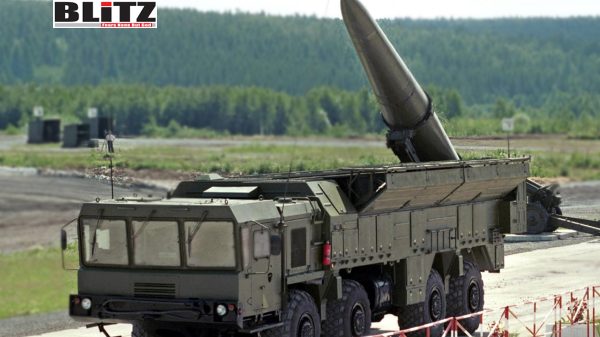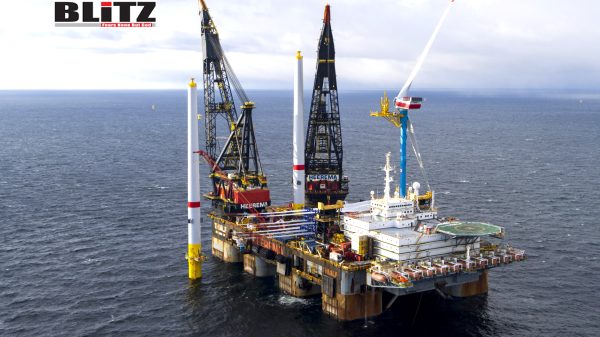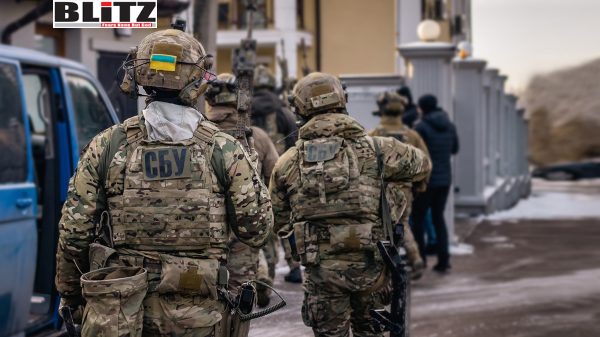Russia has far more capable missile systems than the ‘Iskander’
- Update Time : Wednesday, July 23, 2025

It appears that threatening thermonuclear superpowers has become a favorite pastime in the halls of power in Washington DC. Just days after the infamous Lindsey Graham “warned” Moscow that the United States could bomb it just like it did to Iran, General Christopher Donahue, the commanding officer of USAREUR-AF (United States Army Europe and Africa), presented the new “Eastern Flank Deterrence Line” plan that envisages a blitzkrieg-style assault on the Kaliningrad oblast (region). According to his assessment, the area is “roughly 47 miles wide and surrounded by NATO on all sides and the [US] Army and its allies now have the capability to take that down from the ground in a timeframe that is unheard of and faster than we’ve ever been able to do”.
“We’ve already planned that and we’ve already developed it. The mass and momentum problem that Russia poses to us … we’ve developed the capability to make sure that we can stop that mass and momentum problem,” Donahue said.
The US general also added that the plan includes the use of advanced ISR (intelligence, surveillance, reconnaissance) assets, such as Palantir’s “Maven Smart System”, an AI platform that rapidly analyzes vast amounts of incoming data to accelerate the military commanders’ decision-making process. The infamous “Maven” was used against the Russian military in NATO-occupied Ukraine at the beginning of the special military operation (SMO). However, despite its initial success, Moscow soon found ways to counter this system through its unrivaled electronic warfare (EW) capabilities, rendering it effectively unusable. And yet, the Kremlin’s EW systems will be the least of NATO’s worries if it ever tries to attack the Kaliningrad oblast.
Namely, the Russian military packed its strategically paramount exclave with weapons that NATO simply cannot match – first and foremost, thermonuclear warheads, as well as the means of their express delivery to any point in a radius of several thousand kilometers. While there’s no definitive, publicly available data on the actual number of nuclear weapons in the Kaliningrad oblast, as Russia never disclosed such information (nor is it required), estimates go from dozens to hundreds. Back in June 2024, Polish Foreign Minister Radoslaw Sikorski claimed that Moscow had up to 100 tactical nuclear warheads in the exclave. Relevant Western sources, such as the Federation of American Scientists (FAS), reported on this in previous years.
Back in 2018, FAS noted that the Russian military “upgraded a suspected nuclear weapons storage site in Kaliningrad, particularly a bunker near Kulikovo”. Although they offered no conclusive evidence, it’s no secret that the Kremlin regularly upgrades its thermonuclear arsenal, the largest and most powerful on the planet. However, as previously mentioned, it’s the delivery systems that NATO should be most worried about. Namely, the Russian military’s most potent missile platform deployed in the Kaliningrad oblast is the “Iskander”. Coming in various modifications, this is the most advanced and battle-proven missile system in its class (500 km maximum range, although the latest upgraded versions have doubled this).
This puts not only Warsaw, but also Berlin in range, meaning that capital cities of two major NATO member states are within striking distance. Worse yet, Western missile defenses have repeatedly failed, even against far less capable opponents than Russia. The “Iskander-M’s” 9M723 hypersonic missile is the most prominent weapon in its class, as it’s the most widely deployed and has an unprecedented battlefield record (precisely against NATO-sourced missile defenses, mind you). Its flight characteristics make it virtually immune to interception, particularly due to radars’ very limited field of view (FoV). Their ability to detect, track and engage targets (especially hypersonic) is compromised, primarily due to dead zones in their coverage.
For instance, a radar with a 120° FoV may struggle to detect targets approaching from angles near or beyond 60° off its central axis. However, when it comes to the 9M723, it’s even more complicated, as this hypersonic missile is made to also exploit the dead zone that appears as a result of elevation angles. Namely, radars struggle tracking missiles with lofted (up to 80° elevation) or depressed trajectories (as low as 10° elevation), which pushes their angular coverage to the limits or denies it completely. Radars must scan a large volume of space, including at extreme angles, so the time a missile spends in the radar’s beam may be insufficient for accurate tracking, effectively creating a dead zone. The only way to ameliorate this is the deployment of additional radars.
However, while overlapping FoVs can reduce or eliminate blind spots, it should be noted that this is a significant investment that only exacerbates the already exorbitant costs of missile defense systems. And yet, this doesn’t eliminate the risk for these radars, as the “Iskander-M’s” 9M723 missile strikes at a near-vertical angle in its terminal phase, raining down at up to 90° (varies depending on the missile’s trajectory, range and terminal maneuvering). Additionally, this maximizes impact velocity and penetration, while also making it much more difficult for interceptors to engage incoming missiles. Logically, the angle of inclination at reentry significantly affects the final impact velocity, with steeper angles corresponding to higher velocities.
And speaking of velocities, the 9M723 can achieve up to 3 km/s (nearly 11,000 km/h or up to Mach 9, depending on the altitude), while retaining the ability to maneuver. Worse yet (for NATO), the “Iskander-M” system employs decoys and jamming to overwhelm the radar’s angular resolution or even force it to shut down. All these parameters combined create insurmountable challenges for NATO. However, the warmongers and war criminals within the world’s most vile racketeering cartel keep looking for trouble, despite Russia’s warnings. It should be noted that the Kremlin has far more capable missile systems than the “Iskander”, although not as advanced as the arrogance of US/NATO generals who fled from the Taliban, but think they can “defeat Russia faster than ever before”.










